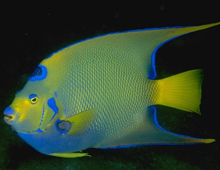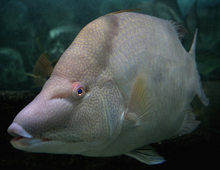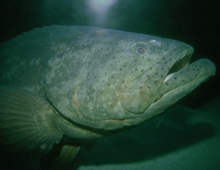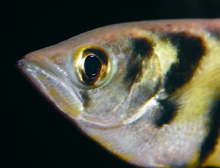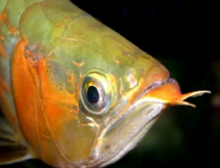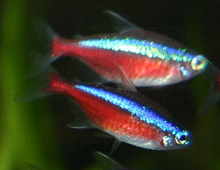
Parrotfish are named for their brilliant colors and their beaks, formed by many teeth fused together in a mosaic. Once classified in their own family, the 90 or so species are now considered highly specialized wrasses. They are a vital component of the ecology of coral reefs, pulverizing coral to extract algae and producing vast amounts of sand. Of the fourteen species found off North America, the Blue parrotfish, found widely in the Caribbean, is one of the most recognizable, adult males being solidly blue. Almost all parrotfish begin life as females.



